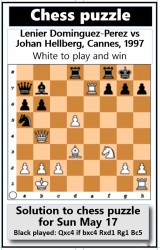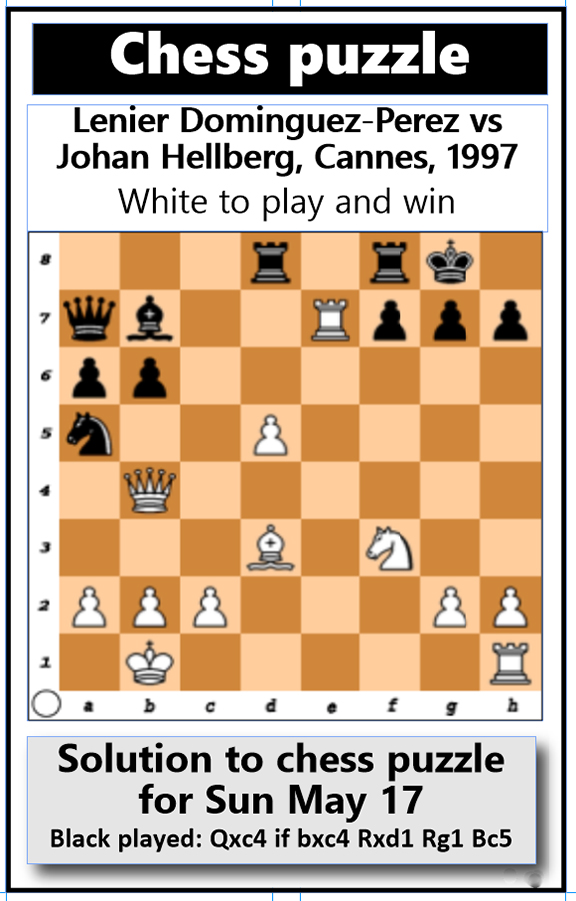India’s International Master Nisha Mohota concludes her remarks in relation to British grandmaster Nigel Short’s criticism that women are inferior chess players.
“Jobs: Being a sportsperson in India has become quite a privilege in the past few years, as the government and Public Sector Undertakings have warmed up to us in a huge way. Besides the Government of India, many PSUs and banks have started recruiting elite level sportspersons as employees in the last three decades, as an encouragement to sports in our society. This served as a huge boost towards our careers, and Indian chess has been booming over the years! However, in recent times the number of players inducted by companies has grown smaller and smaller, and if we have to talk about top women players who have been recruited in the past decade – the numbers are quite insignificant! I wonder why women chess players are being discriminated against when it comes to sports recruitments, when in fact India is in the top ten countries in the world in women’s chess!
“Health, stamina, energy level: Men are physically stronger than women. Women have less stamina which is an essential component in a long chess game. Women have health issues every month which brings unpleasant moments for most women and makes things very difficult for them.

“Marriage, society, career, role models: Every teenager starts thinking about career and future life when he or she is finishing school, around the age of 15. A girl foresees herself married at around 25 years of age. She understands that after marriage she will need a break from her active career for a minimum three years: one year during childbirth and the next two years when the child really needs the mother. Making a comeback in a professional world such as chess, where like in science every day new discoveries take place, is extremely difficult. In addition a child almost always needs its mother more than the father, so leaving the kid alone at home is difficult and worrisome for the mother at any stage. For anyone who does not still understand my point of view, I would recommend the movie Mary Kom, which shows the struggle of a great Indian sportswoman. So, early in her teens, a girl understands that after all the hardships she will go through for success in her career, her future will still be very insecure.

“All these factors are scary for a teenage girl. She sees an extremely difficult life after a certain age: too many challenges, too little opportunity. It makes a talented girl think ‘Is it all worth it?’ This is the reason for high dropout rates among female chess players at an early age. Very few women decide to remain tough and withstand all problems. Their minority makes it easier for the male gatekeepers to downplay them every time. Thus, young girls fail to find a role model for themselves. When I started playing chess in 1988, there were no WGMs in India. I had to pursue a dream to reach something no one had reached before. It is easier for a young girl to see a role model and visualise herself there after a few years.
“Fighting out the men: In an open tournament there is a 10-90 ratio of participation of women to men. The ten women have to compete with the 90 men. If ten men out of 90 do better than the women, the other 80 also think that they are better than the women. Due to one Carlsen, every boy claims to be a Carlsen! At present male chess players are stronger and more numerous than women. But instead of developing a superiority complex, if they see this as an opportunity to encourage women players to do better and compete with them on an equal level, it will greatly benefit women’s chess. There is disparity in prize money and conditions for women in open tournaments. The women prizes are ridiculously low, as if mocking the women. Grandmasters are given pocket allowance and often five-star accommodation, whereas women are made to stay in simple hotels, sometimes even unhygienic ones. No wonder the participation of women in open tournaments is becoming less every day.
“Anything which is rare is precious: Women players who fight out in the world and make many sacrifices in their personal lives are rare. They should be treated as precious and with respect. It is time that men change their outlook towards women. If women had the same physical strength of men, minus the female complications, I am more than sure that they could be better in chess. Women are not mentally incompetent, they just have other issues which must be respected. Encourage the women players by making the prize money at par with the ones for men’s tournament, provide good conditions so that there is a 50-50 ratio in all tournaments, and then let us compare results. If not for the woman who brought you up with care, you wouldn’t be a wonderful human being, so open your eyes to the problems of women and treat them respectfully!”
Meanwhile, the chess fraternity wishes to congratulate President David Granger on his victory and his assumption of the highest office in the nation. Readers may be reminded that President Granger was, at one time, President of the Guyana Chess Federation. Congratulations sir!
Chess game
The following games were contested at the FIDE Grand Prix, Khanty-Mansiysk, Russia. It features some of the world’s elite players.
White Fabiano Caruana
Black Leinier Dominguez Perez
1.e4 e5 2.Nf3 Nc6 3.Bb5 Nf6 4.O-O Nxe4 5.d4 Nd6 6.Bxc6 dxc6 7.dxe5 Nf5 8.Qxd8+ Kxd8 9.h3 h6 10.Rd1+ Ke8 11.Nc3 Ne7 12.Bf4 Ng6 13.Bh2 Be7 14.Nd4 Nf8 15.Rd3 h5 16.Re1 Ne6 17.Nce2 c5 18.Nf5 h4 19.c4 b6 20.Red1 Rh5 21.Ne3 Bb7 22.Nd5 Bg5 23.f3 Rd8 24.Kf2 Bc6 25.Nef4 Bxf4 26.Nxf4 Rxd3 27.Rxd3 Rf5 28.Nxe6 fxe6 29.Ke1 a5 30.Re3 Kf7 31.Kd2 Kg6 32.Kc3 Rf7 33.Rd3 Rd7 34.Rxd7 Bxd7 35.Bg1 Kh5 36.Be3 Be8 37.b3 Bg6 38.a4 Bf5 39.Bd2 Bg6 40.Be3 Bf5 1/2-1/2.
White Leinier Dominguez Perez
Black Dmitry Jakovenko
1. d4 Nf6 2. c4 e6 3. Nf3 d5 4. Nc3 c6 5. g3 dxc4 6. Bg2 Nbd7 7. a4 Bb4 8. O-O O-O 9. Qc2 Qe7 10. a5 e5 11. Rd1 a6 12. d5 Nc5 13. Be3 Nb3 14. Ra4 c5 15. d6 Qe8 16. Rxb4 cxb4 17. Nd5 Nxd5 18. Rxd5 Nd4 19. Bxd4 exd4 20. Rxd4 b3 21. Qxc4 Be6 22. Qd3 Qc6 23. Qd2 Rac8 24. Ne1 Qc1 25. f4 Qb1 26. Kf2 Rc2 27. Qb4 Re8 28. Be4 Bg4 29. Nxc2 bxc2 30. Qa4 Kf8 31. d7 Bxd7 32. Rxd7 c1=Q 33. Qa3+ Kg8 34. Bxb1 g6 35. Qb3 Qc5+ 36. e3 1-0.
White Hikaru Nakamura
Black Anish Giri
1. e4 e5 2. Nf3 Nc6 3. Bc4 Bc5 4. c3 Nf6 5. d4 exd4 6. cxd4 Bb4+ 7. Nbd2 Nxe4 8. d5 Nxd2 9. Bxd2 Bxd2+ 10. Qxd2 Ne7 11. d6 cxd6 12. O-O d5 13. Bxd5 O-O 14. Rad1 Nxd5 15. Qxd5 d6 16. Qxd6 Qxd6 17. Rxd6 Be6 18. a3 Rfd8 19. Rd4 Rxd4 20. Nxd4 Rd8 21. Rd1 f6 22. f3 Kf7 23. Kf2 Rd5 24. Ke3 Re5+ 25. Kd3 Rc5 26. Re1 Bd7 27. Kd2 Rd5 28. Kc3 Rc5+ 29. Kd2 Rd5 30. Kc3 Rc5+ 31. Kd2 1/2-1/2.
White Dmitry Jakovenko
Black Peter Svidler
1. e4 e5 2. Nf3 Nc6 3. Bb5 a6 4. Bxc6 dxc6 5. O-O Qf6 6. d4 exd4 7. Bg5 Qd6 8. Nxd4 Bd7 9. Nc3 Be7 10. Bxe7 Nxe7 11. Nde2 O-O-O 12. Qc1 Bg4 13. Nf4 Ng6 14. Nd3 f6 15. Qe3 Kb8 16. f4 Bc8 17. Rad1 Qe7 18. Rde1 b6 19. Qg3 Rd4 20. Ne2 Ra4 21. c3 c5 22. f5 Rxe4 23. fxg6 Rxe2 24. Rxe2 Qxe2 25. Re1 Qg4 26. Qxg4 Bxg4 27. gxh7 Rxh7 28. Nf4 Kc8 29. h3 Bd7 30. Kf2 Kd8 31. Ne6+ Bxe6 32. Rxe6 Rh5 33. Re2 Kd7 34. Rd2+ Ke6 35. Rd8 c4 36. Ke3 Rb5 37. Rd2 Re5+ 38. Kf3 Ra5 39. a3 Rf5+ 40. Ke3 Re5+ 41. Kf3 Rf5+ 42. Ke3 c6 43. Re2 b5 44. Rd2 Rd5 45. Re2 Kf5 46. Rf2+ Ke5 47. Kf3 Rd3+ 48. Kg4 Re3 49. Rf5+ Ke4 50. Rf2 f5+ 51. Rxf5 Re2 52. g3 Rxb2 53. Rg5 Kd3 54. Rxg7 Kxc3 55. Rc7 a5 56. Rxc6 b4 57. axb4 axb4 0-1.





